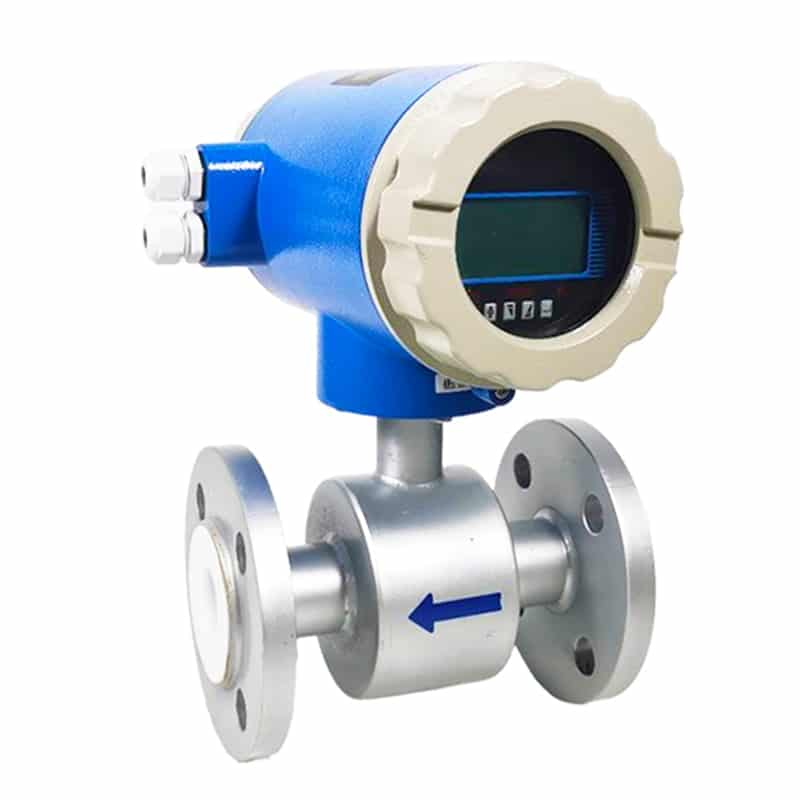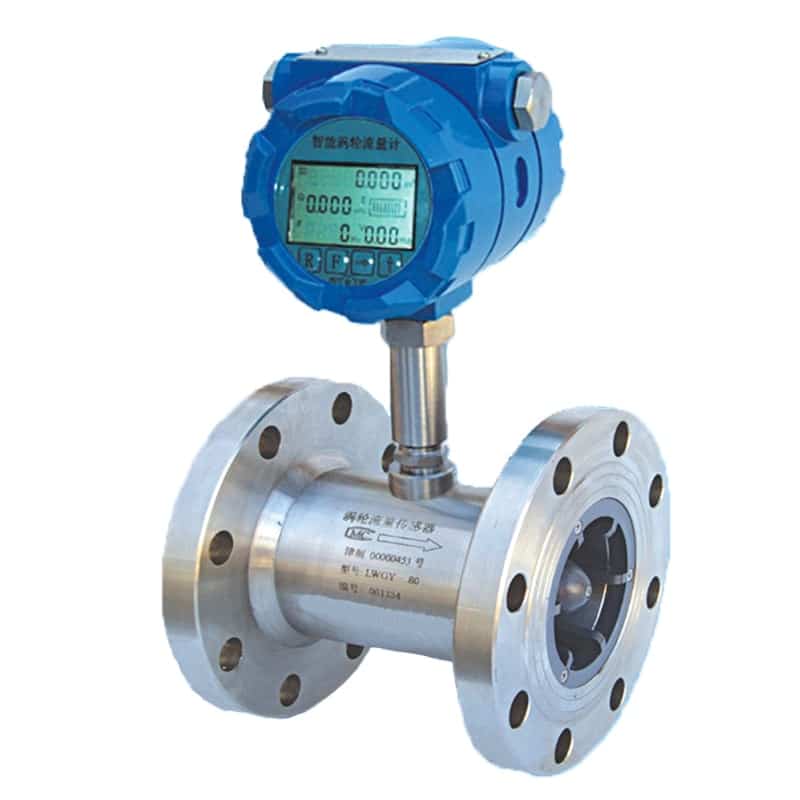A cryogenic flow meter is a flow meter that operates in a low-temperature environment (generally below -100°C).
What fluids do cryogenic flow meters transport?
Cryogenic flow meter is a device designed to measure the flow of fluids at very low temperatures. These flow meters are particularly suitable for the measurement of liquid gases (e.g. liquid oxygen, liquid nitrogen, liquid argon, etc.) or very low temperature liquids.
The temperature of liquid gases and very cold liquids varies depending on the type of substance. Different gases or liquids have their specific temperature ranges that keep them in a liquid state. The following are some common liquid gases and their liquefaction temperature ranges:
| Gas | Liquefaction Temperature (Celsius) | Liquefaction Temperature (Fahrenheit) |
| Liquid Nitrogen | Approximately -196°C | Approximately -321°F |
| Liquid Oxygen | Approximately -183°C | Approximately -297°F |
| Liquid Argon | Approximately -186°C | Approximately -303°F |
| Liquid Helium | Approximately -269°C | Approximately -452°F |
| Natural Gas | Varies (below -162°C) | Varies (below -260°F) |
Natural gas liquefaction temperature varies based on its composition but typically occurs below -162°C (-260°F).
Types of cryogenic flow meters
Cryogenic flow meters are designed to measure fluid flow in very low temperature environments and there are several types:
- Magnetic flow meters(AYT Digital Liquid Magnetic Flow Meter): These flow meters use a magnetic field and a sensor to measure the flow of conductive fluids (e.g., liquid oxygen, liquid nitrogen). They have the advantage of having no dynamic parts and are suitable for cryogenic fluids.


- Vortex flow meters(APT Air Vortex Flow Transmitter): Vortex flow meters can be used for flow measurement of liquid gases or cryogenic liquids. They are suitable for high viscosity liquids and harsh environments and provide reliable measurement results.
- Ultrasonic flow meter(TUF Clamp On Ultrasonic Flow Meter): This type of flow meter utilizes ultrasonic waves to measure fluid flow and is suitable for liquid gases and very low temperature liquids such as liquid nitrogen.


- Thermal Mass Flow Meters: Thermal mass flow meters measure the amount of heat absorbed by a fluid as it passes through a pipe to calculate the flow rate. They can be used to measure the flow rate of liquid gases.
The basic formula is to calculate the mass flow rate based on the change in the heat capacity of the sensor and the amount of heat carried away by the fluid through the sensor. The basic formula is as follows:

where:
m˙ is the mass flow rate of the fluid (in kg/s)
q is the heat released or absorbed by the sensor (in Joules/Joules)
C is the heat capacity of the sensor (in Joules/degree Celsius)
ΔT is the temperature difference (in degrees Celsius) before and after the fluid passes through the sensor.
Note: Although thermal mass flow meters are typically used at high or ambient temperatures, they can also be used to measure low temperature fluids. This is because they measure mass flow, not temperature or volume flow.

Liquid turbine flow meters(LWGY Liquid Turbine Flow Meter): These flow meters are suitable for the measurement of liquid gases or very cold liquids. They measure the flow rate by the relationship between the rotational speed of the turbine and the flow rate of the fluid.
Each type of cryogenic flow meter has its specific advantages and applicability, and the right type of flow meter is selected based on the specific application scenario and type of fluid.
What are typical applications for cryogenic flow meters?
- Industrial gas production and storage: In the production of liquefied gases (e.g. liquid oxygen, liquid nitrogen, liquid argon), cryogenic flow meters are used to monitor and control gas production and flow.
- Energy industry: In the liquefied natural gas (LNG) production and delivery process, cryogenic flow meters are used to measure the flow of liquid natural gas.
- Aerospace and research laboratories: Used in laboratories for experiments and research requiring extremely low temperature conditions, including space science, superconductor research, etc.
- Healthcare: Cryogenic flow meters are used in the healthcare sector for the transportation and storage of liquid gases, such as liquid oxygen supply systems.
- Food & beverage industry: Used for flow measurement in cryogenic food freezing and refrigeration equipment to ensure that food is stored and transported at the right temperature.
- Scientific research and experiments: including physics, chemistry and other fields of experiments and research, especially for experiments requiring extremely low temperature conditions.
Cryogenic flow meter calibration
- Ambient temperature control: When performing cryogenic flow meter calibration, the temperature of the calibration environment must be considered and controlled. Ensure that the ambient temperature is close to the operating temperature of the flow meter in actual operation.
- Cryogenic environment simulation: As far as possible to simulate the actual operation of the flow meter low temperature environment. This may require the use of special cooling equipment or containers in the laboratory to simulate low temperature conditions.
- Calibration fluid selection: Select a calibration fluid that is stable at low temperatures. Some fluids may freeze or otherwise change at low temperatures, so choosing the right fluid is critical.
- Stability of measurement instruments: Ensure that the measurement instruments used for calibration (e.g., thermometers, manometers, etc.) are stable and accurate at low temperatures. Accurate measurement of temperature and pressure is critical to the calibration of cryogenic flow meters.
- Adaptation of equipment to low temperatures: Calibration equipment and tools also need to be adapted to low temperatures to ensure they work properly and measure accurately.
Summary
Cryogenic flow meters are key devices for measuring fluid flow in extremely low temperature environments, and their design and application allow for reliable and accurate flow measurement in liquid gases or very cold liquids. Through a special design and calibration process, these flow meters are able to operate under extreme conditions and play a key role in industry, research, medical and other fields.
Apure not only provides low temperature flow meter but also hot water flow meter technology, you can consult us according to your needs. Not only that, Apure also offers a variety of water quality analyzers, thermometers and more.
